Designer Ross Atkin on his third Kickstarter project, the downside of licensing, and the one thing you MUST do to crowdfund

Kickstarter designer Ross Atkin on where crowdfunders go wrong, the skills you don’t learn at university… And robots. Lots of robots!
Ross, you’re about to launch your third toy product on Kickstarter. What were the first two?
They were both cardboard robot kits with re-usable parts; you can use them to make your own robots. The first – The Crafty Robot – was a simple, cheap moving robot… It works with a little circuit board I called Fizzbit. You charge it from a USB port, then it runs around. When you’re bored with the cardboard robots in the kit you can attach the Fizzbit to household items like paper cups, popsicle sticks or even cookies, and see how you can get them to move and look the way you want.
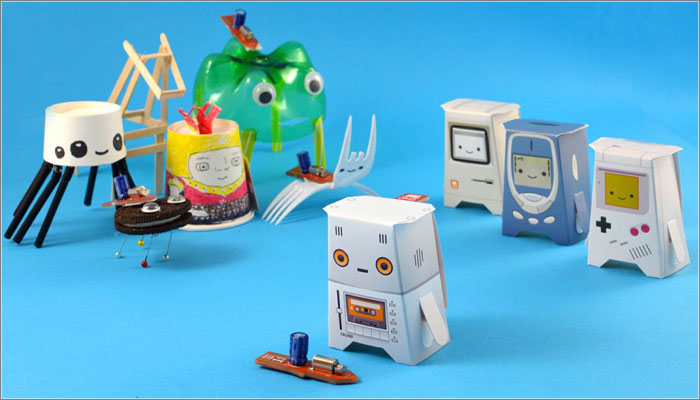
Oh, I like that! So it’s a sort-of “make a robot out of anything” kit?
Exactly – and the second one – Smartibot – brought the same irreverent idea to a programmable robot. Like its predecessor, Smartibot is made of cardboard, and the electronics can be reused in your own creations. You can program it with code blocks or JavaScript, though. We made an app for it; you can use it as a remote control, or attach it to the robot and use an A.I. to make it recognise and respond to people, vehicles, pets and household objects. With the default programming, it chases whatever you tell it to.
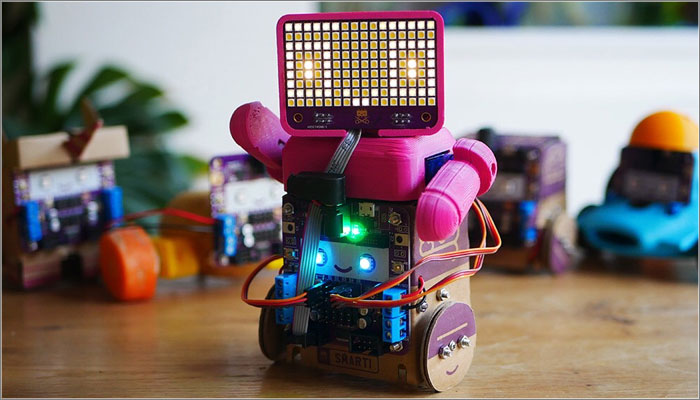
It chases things? I’ll take 20 for the neighbour’s cat! So what’s in the kit?
It comes with enough cardboard parts to make three designs – the A.I. Bot, Unicorn and TeaBot which can carry two drinks! That said, the electronics and software give masses of freedom to make your own robots. The circuit board controls up to 14 motors, and you can design your own control pads.
Okay… I have what I describe as an encyclopaedic ignorance of technology! So when you say I can design my own control pads, how would I do that?
You can use joysticks, sliders, direction pads, buttons and switches to set up how you control the different motors, without any programming. We also specified the voltages and connectors so it’s really easy to hack existing toys – anything that runs on up to six AA batteries. Plus it works with standard radio control kits… We’ve had lots of fun making example projects – everything from a 3D-printed monster truck and a blimp, to battle bots made out of vegetables.
This sounds great! And what’s the new product?
It’s called Smartipresence; a really accessible telepresence robot made out of cardboard. You put your phone in, open the app, then send a link to someone you want to be with. When they open the link, they appear on the phone!
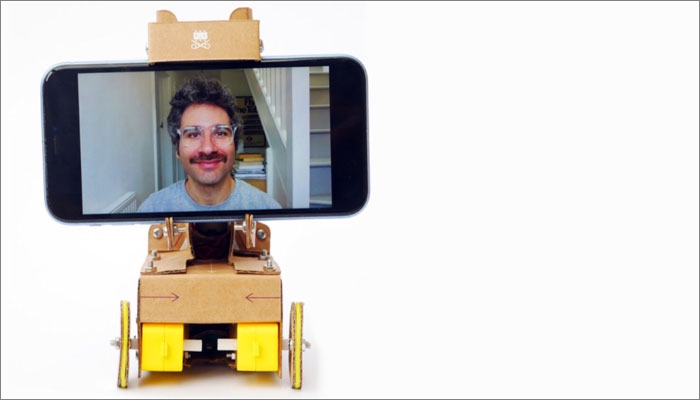
Rigggghhhht. So it’s like a video call, but the phone is on a cardboard robot?
Exactly. But as well as being able to see what the robot sees, you also have controls to drive the robot round and look up and down… So you can go where you want, and look at what you want. It’s not as good as actually being there, but it’s much better than a video call!
Got it. And presumably that kit’s as versatile as the earlier models?
Yes… Smartipresence is based on Smartibot. It has the extra motor, fixings and cardboard parts you need to make it. This means the telepresence system is as adaptable as the original robot. So for example, I made one the same height as our toddler!
Out of other toys and objects?
Yes; I used a cheap toy tank chassis, and an off-cut from a rail that goes in a wardrobe. I’ve also converted two radio-controlled monster trucks, and built a telepresence duck… That uses a plastic decoy duck and a toy outboard motor. The real ducks were surprisingly convinced when I put it on the lake.
Well, yes… I suppose they’ve no reason to suspect anyone’s built a telepresence duck… I’m curious: how did you come to be doing what you do?
I feel lucky to have been introduced to design and engineering as a child by my dad, and the father of my oldest friend. Later, I trained as a mechanical engineer and a product designer…
I’ve worked on many different products – from vacuum cleaners and stairlifts to equipment for multi sensory environments. A lot of my work focusses on streets and other forms of infrastructure… That sector moves very slowly, though, taking many years to get designs out in the world, so I was looking to work on something faster moving.
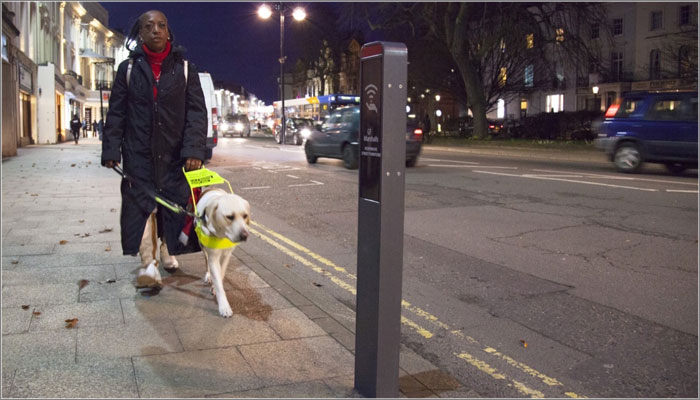
I saw some of the street ideas on rossatkin.com… What was I looking at?!
You probably looked at something called Responsive Street furniture which is all about making streets adaptable to different people’s needs. It includes things like street lights that change brightness, and crossings that give people extra time if they need it, which is all pretty wild.
And out of interest, then, why take your ideas on Kickstarter? As opposed to licensing them, say?
It’s funny you ask… I actually have done some licensing, both for some of the projects I’ve worked on in street design, and for the original Fizzbit, which I licensed to Kitronik. Licensing definitely gets you a quiet life, and it can work out well if you have a good relationship with the people making decisions at the company you work with…
I sense there’s a but…
Well, yes… The problem is that you don’t really get much – if any – control over how your invention gets resolved, marketed and positioned… So the thing that ends up in the world can end up quite different from the thing you invented.
And with Kickstarter you have more control?
Yes. What’s magical about Kickstarter is you get to package your idea exactly how you see it, put it out to the world and see how people feel about it. If they like it – and the Kickstarter community is amazingly generous, warm and supportive – it’s the most fantastic feeling. It’s probably the closest we product people get to releasing an album.

Nice analogy! So where do you get your ideas? What’s your creative process?
It usually starts with a problem. I spend a lot of time doing formal user research around the street and assistive technology stuff, but I also do informal research whenever I can. For example, I talk to kids about what they like and don’t like when it comes to toys, and I run workshops to see how they play and respond. The more you learn about different people, the more problems you come across that need solving. I’m also very keen on doing quick, hacky experiments to try ideas and see if they’re worth pursuing.
Can you give me an example of that?
Sure! Smartipresence grew out of one of those experiments. When it became apparent that none of us would be going places this year, someone tweeted that Smartibot might make a good telepresence robot… I thought that might be helpful, so I put together a pair of web apps that provided a slightly inconvenient, but functional, way to do telepresence using the kit’s A.I. Bot.
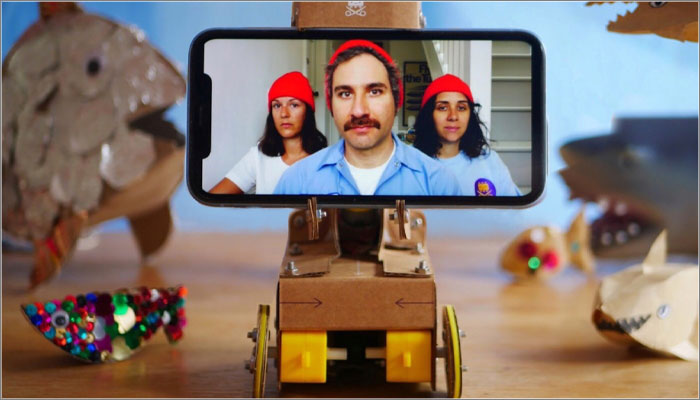
By using that myself, and trying it out with others, I realised it could be properly useful! But we needed a robot design that let the phone tilt so the pilot could look up and down. We also needed a better-integrated telepresence system… So I spent two weeks at my kitchen table, hand cutting iterations of cardboard prototypes to resolve the former. For the latter, I worked with Altrubots, a company that builds publicly-controllable robots that perform helpful functions, like trash collection.
In terms of finding backing for an idea then, what – in your experience – is the hardest part?
For me, whether it’s putting things together for Kickstarter, trying to set up licensing deals or winning consultancy projects, the hardest part – and the biggest determinant of success – is communication, both verbal and visual…
So, with an undergrad degree in engineering, you learn how to make things work. You also learn, through technical drawings and reports, how to communicate with other engineers… But not how to communicate with other people! I did post-grad on a course at the Royal College of Art called IDE, which accepts a lot of engineers. It was basically two years of all the engineers getting smashed in every end-of-project presentation by people with design backgrounds, who had less-resolved ideas but much better communication.
Soft skills won the day?
Yes! Over and over. After that I worked at the RCA as a researcher in the Helen Hamlyn Centre for Design. It was run by Jeremy Myerson, who’d spent much of his career as a journalist. Having monthly reviews with him, where he’d rework our presentations and reports, was an incredibly useful experience.
Also, with the last two Kickstarter campaigns, I’ve worked with Heather Delaney at Gallium Ventures. She’s amazing, and hugely helpful making the communication material as clear and compelling as it can be. I advise anyone developing ideas to get as much help as possible with communication.

And other than learning to communicate well, what would you say if I asked you to give inventors three tips to help get backing for ideas?
I would first say, think about your network and capabilities… Pick something you know you can pull off! The Kickstarter community is very generous, kind and optimistic; you shouldn’t abuse that by promising things you can’t deliver.
Great point! That’s not to say, though, that you should be less ambitious?
No, not at all. Just that you have to be realistic. I started small and simple with my first Kickstarter. As I’ve learned more, subsequent projects have got more complex and ambitious. Also, the network of people and companies I can rely on has grown…
Which makes it easier, presumably?
Exactly. There are no magic ‘manufacture it in China’ or ‘build the app’ buttons that you can press to make things happen. You have to put things together by getting out there, meeting and working with people. Second, I’d say try to develop something very sharp and focused… Something where the value people see comes from creativity and insight, not the Bill of Materials or an unproven technology.
Just clarify that, would you?
Unexpected things always crop up, so you have to build in enough margin to cover them and still deliver what you promised. If you price your product by looking at the Bill of Material cost and adding a small margin on top, you’re almost certain to end up disappointing people. The same is true if you sell people on some technology that you’ve not proven in use, on the assumption you’ll get it to work once you get the money. You can look at Coolest Cooler as a cautionary tale!
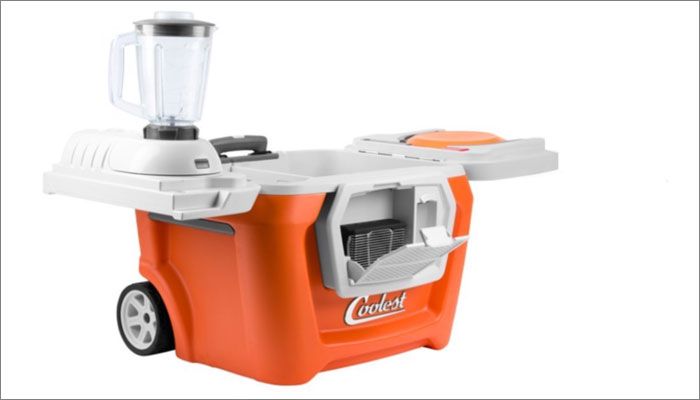
That would be one of Kickstarter’s most-notorious failures… People should look into that; it’s quite a lesson to understand… And what’s your third tip?
You just cannot be too prepared before starting the campaign! With the Smartibot campaign, we were about six weeks late shipping the rewards because a few things went wrong in production, and we were let down by a big tech company. They promised us some help, then couldn’t provide it. We were even later with a few features in the Android app because porting them from iOS proved much more difficult than we thought.
But presumably you had some credibility to cushion you?
The vast majority of backers were generous and understanding about it. Even so, I want to avoid that happening again this time so I’ve made sure we’re much further along, both in terms of manufacturing setup and software development. We’re also working with smaller partners in whom I have more confidence.
Okay. That seems like a good place to start wrapping up with a plug. Where can people back the new idea? We’ll chuck in a link…
Smartipresence is live on Kickstarter right now – with the expansion pack for an existing Smartibot – from £15… There are also complete kits, which include a Smartibot kit, from £50.
https://www.kickstarter.com/projects/rossatkin/1658341098?ref=e5sefw&token=60229f42
Super! And if I just wanted Smartibot or Crafty Robot?
Oh – they’re on our web shop: thecraftyrobot.net!
Super! Last question: what’s the most interesting thing in your office?
I’ve just moved into a new studio and am moving in a load of stuff I’ve had in storage… There are some unusual things: my roadworks PPE, a 3D map we made of a Welsh valley; a talking bollard… I feel like probably the strangest thing is telepresence duck.
The telepresence duck it is! I’m pleased you said that. People hear enough of me talking bollards… Ross, I’m going to thank you for your time and wish you all the best with your next project. Also, I’ll pop in a link to Altrubots and Gallium Ventures so everyone gets a plug.

—-
To stay in the loop with the latest news, interviews and features from the world of toy and game design, sign up to our weekly newsletter here


























